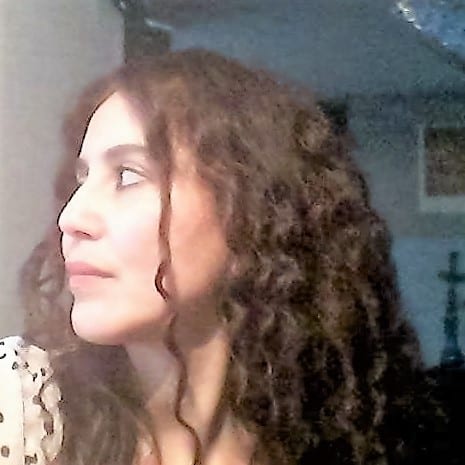Where: The town of Bentalha, about 15 kilometres south of Algiers, Algeria
When: During the night of 22-23 September 1997
What happened
It took one night to massacre more than 400 people. Though official sources claim only 100 people were killed. On 22 September 1997, as night fell, between 50 to 100 armed men dressed in Afghan tunics, sporting long beards, with their faces sometimes hidden under balaclavas, stormed Haï El-Djilali and Haï Boudoumi Bentalha, two neighbourhoods in Bentalha, a remote suburb of Algiers with a population of 2,000-3,000. From 22:30 pm to 04:00 the next morning, armed with knives, machetes, axes and firearms, they attacked houses. When the slaughter began, the city was plunged into darkness as the attackers had cut off the electricity. The cries of the victims, men, women and children, and the sounds of bombs exploding could be heard for miles around. Survivors described how the executioners decapitated, burnt, executed, disembowelled…
A few weeks before this massacre in Bentalha, on 28 August 1997, in the town of Raïs, nearly 300 people were massacred by the Armed Islamic Group of Algeria (GIA). The plain of Mitidja – was nicknamed ‘the triangle of death’ in the midst of the Black Decade: murders, fake roadblocks, explosions and kidnappings were recurrent. It was also the scene of the massacres of civilians that marked 1997-1998.
These massacres occurred in a dramatic context for Algeria. Since the coup d’état of the officers in January 1992, in order to prevent the electoral victory of the Islamic Salvation Front (FIS) in the legislative elections, Algeria sunk into a civil war that pit the national army against various Islamist militias such as the GIA and the Islamic Salvation Army (AIS). The conflict ended with the victory of government forces, with the surrender of the AIS and the defeat of the GIA in 2002. In ten years, between 60,000 and 150,000 people were killed, thousands went missing, one million were displaced, tens of thousands were forced into exile and damages cost the country more than $20 billion.
OPINION: After six decades of independence Algeria is desperate for change
What happened next
A photo will illustrate this massacre for the world’s collective memory. The “Madonna of Bentalha” is a woman leaning against a wall of the hospital in Zemirli, her face overcome by pain. The image won Hocine Zaourar, from Agence France Presse, the World Press Photo Award.
But questions remain about what happened that night. Though this was neither the first nor the most murderous massacre, it reached a level of barbarism that had never been seen before.
According to witnesses, the terrorists returned to the orchards that surrounded the city without being bothered by the army, which was stationed at the entrance of Bentalha. Despite the cries and alerts from the few inhabitants who managed to flee, the soldiers, who were in service the day after the massacre, explained that they could not intervene without an order from their superiors and that the land was covered in mine and therefore they could not go through due to lack of lighting. According to witnesses, these soldiers had taken up positions a few dozen metres away with armour and ambulances, without intervening and even prevented neighbours from coming to their aid.
The security forces had refused to provide weapons for self-defence to some of the inhabitants who were accused of protecting and feeding the Islamist forces. In Benthala, the armed groups had indeed settled in the orchards, in what some describe as a direct manipulation of Islamist violence by the Algerian secret service.
There were no arrests, nor any trial worthy of the name. The question remains about who killed who.
In 2005 the Charter for Peace and National Reconciliation was passed in Algeria. Two articles of the order implementing the Charter now prohibit any prosecution and condemn the families of victims to renounce any desire for justice. Article 45 stipulates that “no proceedings may be instituted, individually or collectively, against elements of the defence and security forces of the Republic, all components combined (…). Any denunciation or complaint must be declared inadmissible by the competent judicial authority.” While Article 46 states that “is punishable by imprisonment for three to five years and a fine of 250,000 to 500,000 dinars, anyone who, by his statements, writings or any other act, uses or exploit the wounds of the national tragedy to undermine the institutions of the People’s Democratic Republic of Algeria, weaken the state, harm the honourability of its officials who have served it with dignity, or tarnish the image of Algeria internationally.” After this vote, more than 6,000 Islamists descended from the maquis – countryside where they had taken cover – and returned to their homes. This law also resulted in the release of more than 1,500 Islamists convicted of terrorism.
Despite the adoption of the Charter of National Reconciliation, the witnesses of this tragedy are trying to survive and forget their executioners. In the absence of adequate psychological care, the survivors suffer many aftereffects, many are now living with long term mental health issues after seeing the mutilated bodies of their loved ones.
ONTHISDAY: Algeria’s War of Independence from France
The views expressed in this article belong to the author and do not necessarily reflect the editorial policy of Middle East Monitor.

![A distraught woman, who later was called the 'Madonna of Bentalha' is comforted by a relative at Zmirli hospital after having lost all her family on 23 September 1997 [HOCINE ZAOURAR/AFP via Getty Images]](https://i0.wp.com/www.middleeastmonitor.com/wp-content/uploads/2020/09/GettyImages-139648335.jpg?fit=920%2C613&ssl=1)







